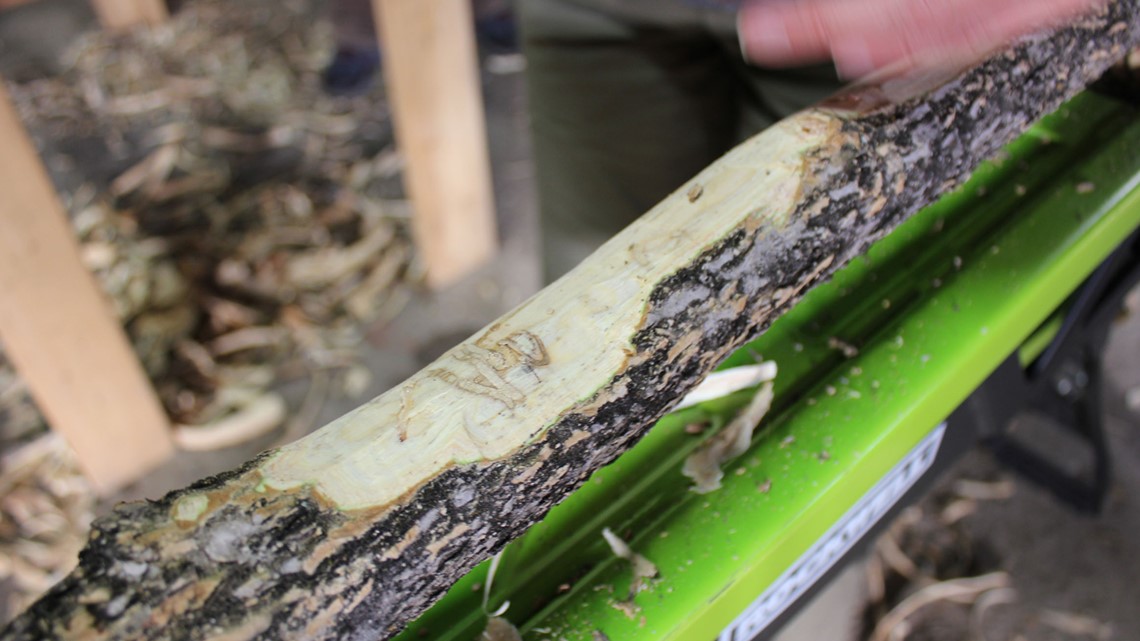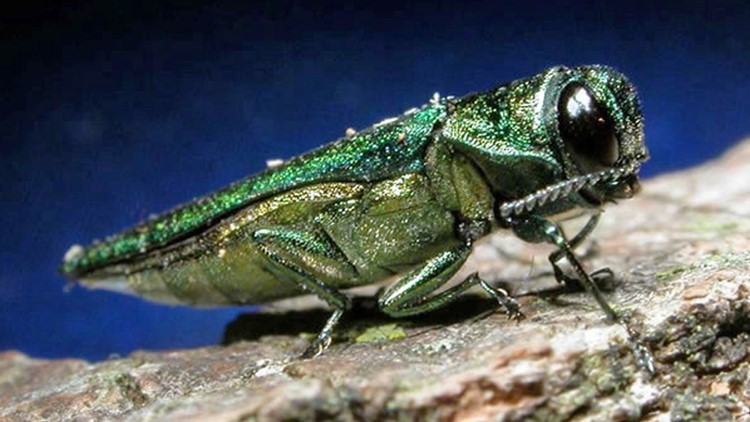AUGUSTA, Maine — There is evidence of the spread of an invasive insect that kills ash trees, emerald ash borer (EAB), in regulated Maine areas, the Maine Department of Agriculture, Conservation and Forestry’s (DACF) Maine Forest Service (MFS) says.
MFS says infestations were confirmed in the towns of Van Buren in Aroostook County, Gorham in Cumberland County, and Ogunquit, Parsonsfield, Shapleigh, and South Berwick in York County. Targeted surveys by MFS staff to locate potential future biological control release sites uncovered the first detected infestation in the York County town of Newfield.
EAB were first detected in Michigan in 2002, and have since spread across 35 states through various wood products, including firewood and trees sold for planting. EAB was found in northern Aroostook County in May 2018, western York County in September 2018, and Cumberland County in September 2019.
These detections have led to quarantine regulations in all of York and Cumberland Counties and parts of Oxford and Aroostook Counties. Although EAB has not been detected in any new counties in 2020, DACF monitoring programs show EAB populations are expanding within already-regulated Maine areas.
In October, DACF warned that several Lowe’s stores in Maine may have sold ash trees infested with EAB. DACF said 36 ash trees, which originated at a nursery located in an EAB infested and quarantined area, were purchased during the spring and summer from Lowe’s stores in Auburn, Augusta, Bangor, Brewer, Brunswick, Portland, Sanford, Scarborough, Thomaston, and Windham.
DACF explains that each spring, MFS staff and volunteers from many sectors help detect EAB by participating in the girdled trap tree network, an EAB monitoring program. Girdled ash trees are attractive to any EAB in the immediate area. The trees are felled in the fall, and sections of them peeled to look for EAB activity. These trap trees provide a good low-tech detection tool that can be used wherever ash trees grow.


“The girdled trap tree network is critical to our response to emerald ash borer in Maine,” DACF forest entomologist Colleen Teerling said. “Most of the six biological control release sites established in York County in 2020 were identified through this program, and every year since 2018, this method has provided us with first detections in towns.”
In 2020, at least 34 trees were girdled across 8 of Maine’s 16 counties, and nearly all have been processed. Over the past ten years, this processing has been a social event, where interested landowners, forest managers, and others could participate in the sampling. This year, to reduce the risk of COVID-19 transmission, processing was conducted by MFS, City of Portland, and Acadia National Park staff.
Of the 33 trees processed, nine showed signs of EAB, including exit holes, larval galleries (the tracks etched into the bark and sapwood of the tree as the larvae feed) and EAB larvae. The nine positive trees were within the area currently regulated by the EAB quarantine.
Observations from landowners and foresters have turned up EAB infestations in three York County towns: Ogunquit, Parsonsfield, and Shapleigh.
“The Maine Forest Service is extremely grateful for the continued support of the public in responding to EAB,” Teerling said. “In particular, we thank the volunteers in the girdled trap tree network who contribute their time and their trees and people who observe damaged trees or suspicious insects and then make an effort to report them.”
The spread of EAB in southern Maine, which is on the leading edge of the insect’s distribution, is more significant than that in the smaller infestation center in northern Maine. In both cases, DACF says the natural spread is inevitable and may be slowed using biological controls to reduce population and careful ash management.
DACF says a more significant impact on the spread can be had through targeting human-caused movement: by observing best management practices for handling ash within regulated areas, following quarantine rules, using local or heat-treated firewood, and avoiding using ash in new tree plantings.



